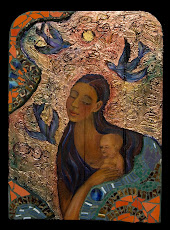Many years ago I had a Real Estate License. I sold residential resort real estate in Southern California for a couple of years before going to college to complete my training as an artist. I learned many things from that experience, including this realization: Selling real estate was no fun for me, but I loved to look at houses. It's no surprise that years later I developed my color consulting business in Bend, Oregon, as part of my creative work. Home design is a passion of mine.
Last weekend I staged a client's home in Portland, Oregon. The young family has lived in the home for about 7 years (2 children and a dog). They've had wonderful luck in this location and experienced a happy family life. Their good fortune has resulted in a move to another area, and they were ready to sell their home. They wanted to be sure that their home conveyed a clean, warm and well-cared-for first impression that would welcome buyers.
You can see a fly-around video of the home at this link http://tour.circlepix.com/tour.htm?id=719435&mls_tour=1 or, view the Portland, Oregon family home for sale on the John L. Scott Real Estate website.
Keep in mind this concept when you stage your home. When you style or stage your home for sale, you are creating home design that barely whispers your presence while it loudly invites the visitor to imagine themselves living in your home. You want to create a similar feeling to the one you get walking into a well appointed hotel suite or rental house, only with a bit more personality.
Here are a few staging tips to help you sell your home:
- Have on hand: Moving boxes, tape and markers. Prepare a space in the garage or other storage area to store the filled boxes. Uniform sized boxes are easier to stack.
- Clear out storage areas and closets to about half full. Arrange items that are left so that they occupy the space without filling it full. Buyers like to open cabinets and closets - make the shelves look spacious.
- Empty full bookshelves to about 10% to 30% of their former selves. Arrange remaining books with decor items to add interest.
- Hide and/or lock away any valuables including prescription drugs.
- Remove family photos - including any refrigerator photos and notes.
- Ask yourself if you can remove any furniture in the room to increase the sense of spaciousness. Be strict with yourself, you can always add pieces back.
- Remove any broken or damaged things from the room.
- Repair any broken or damaged parts to the room including: replace cracked windows, fill nail holes and touch-up wall and trim paint, replace caulking in bathrooms and kitchen if needed, clean and restore flooring as much as possible.
For assistance with home staging, home styling and decor ideas in the Central Oregon or Portland, Oregon areas, call me for a consultation 541-388-5157. I also include color consulting as part of this service.
















